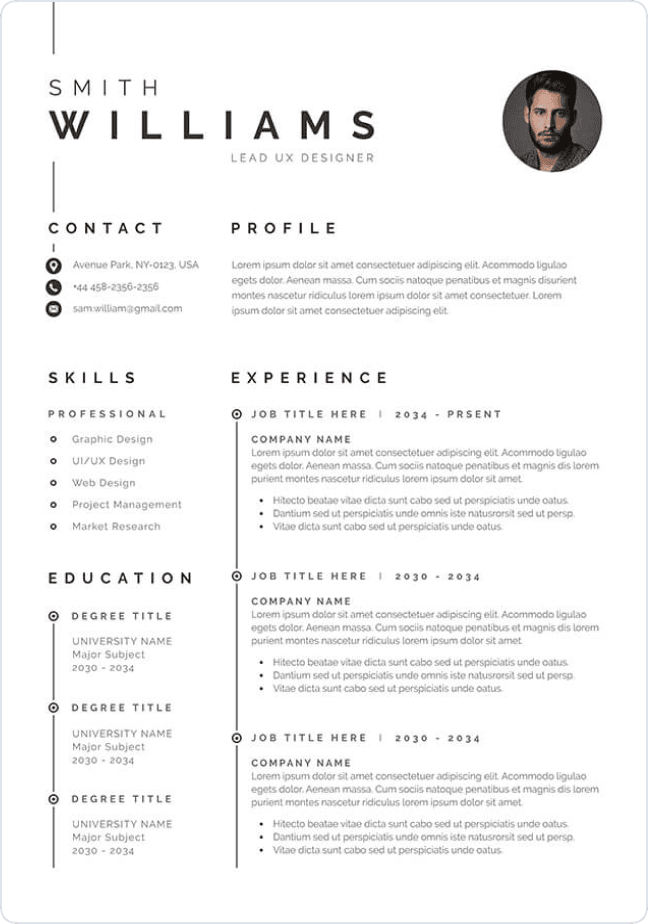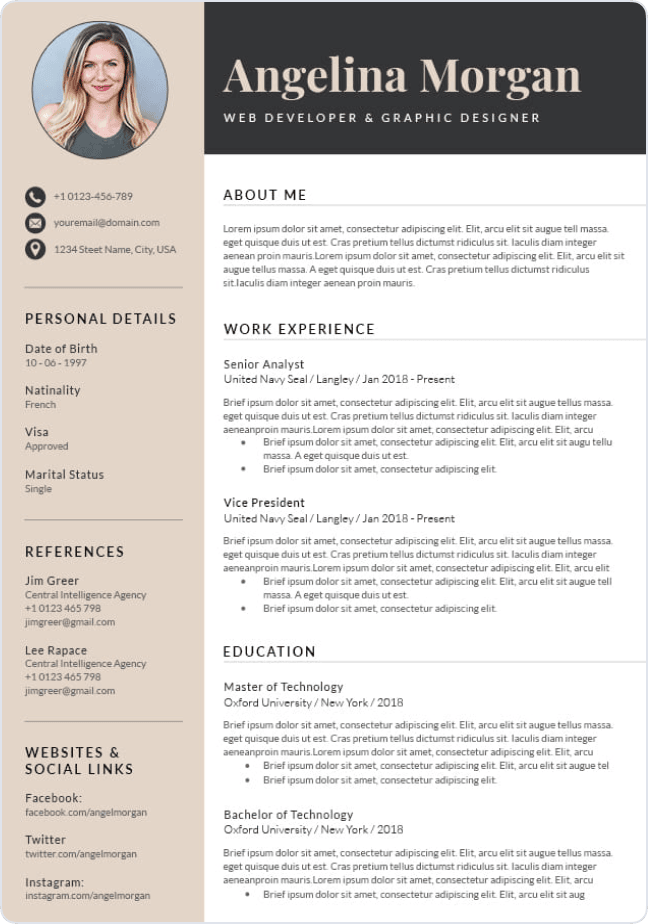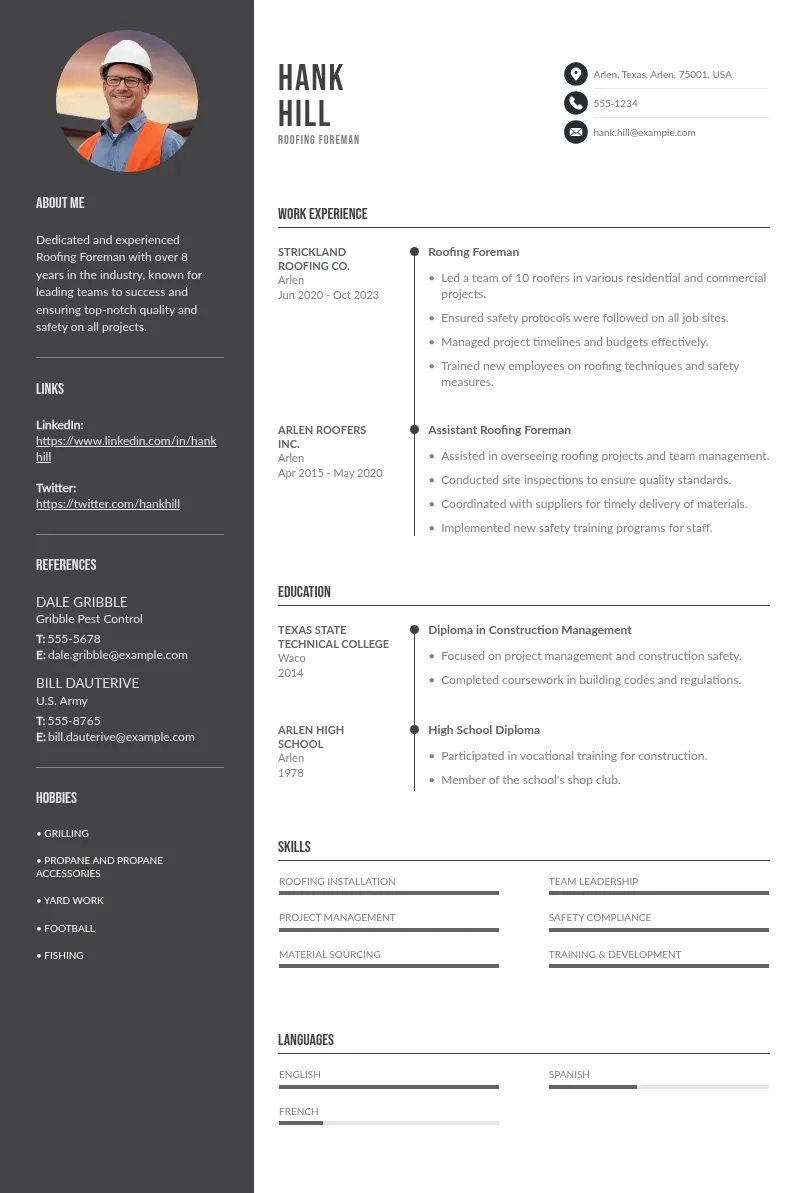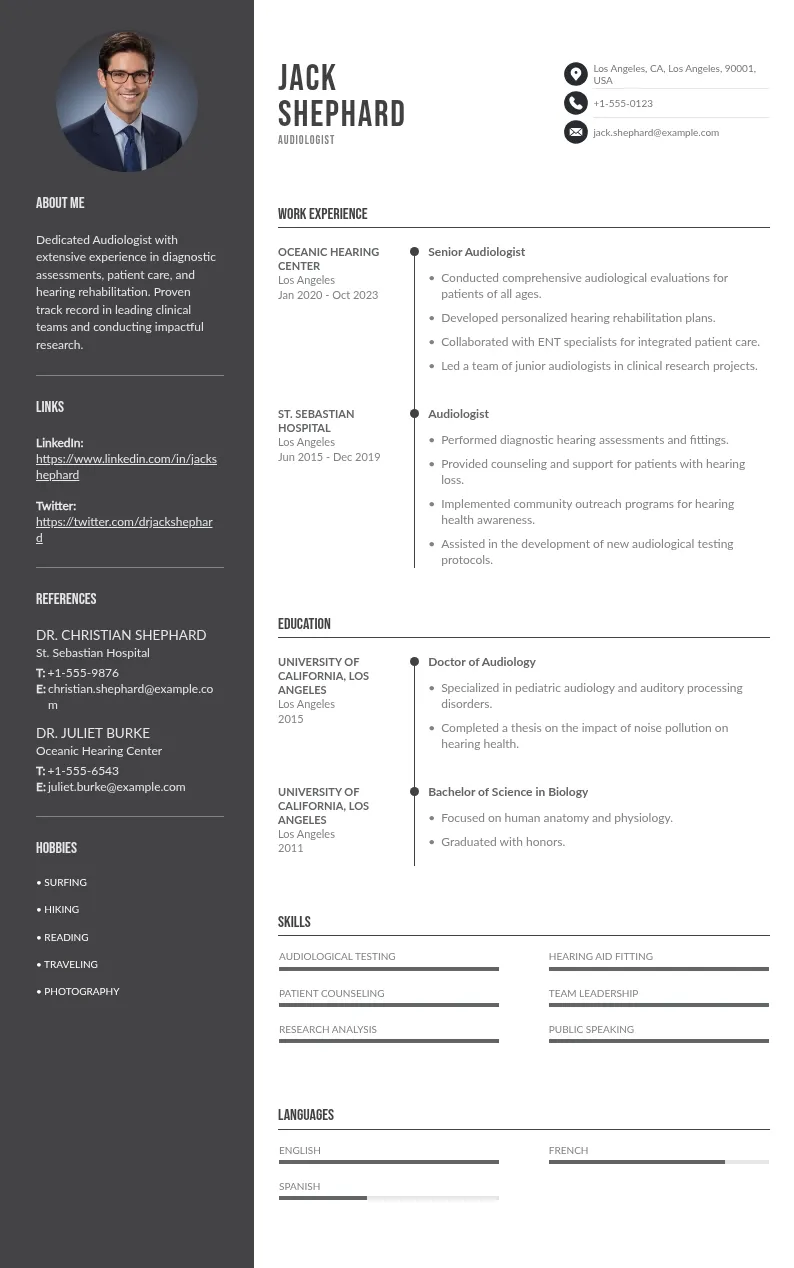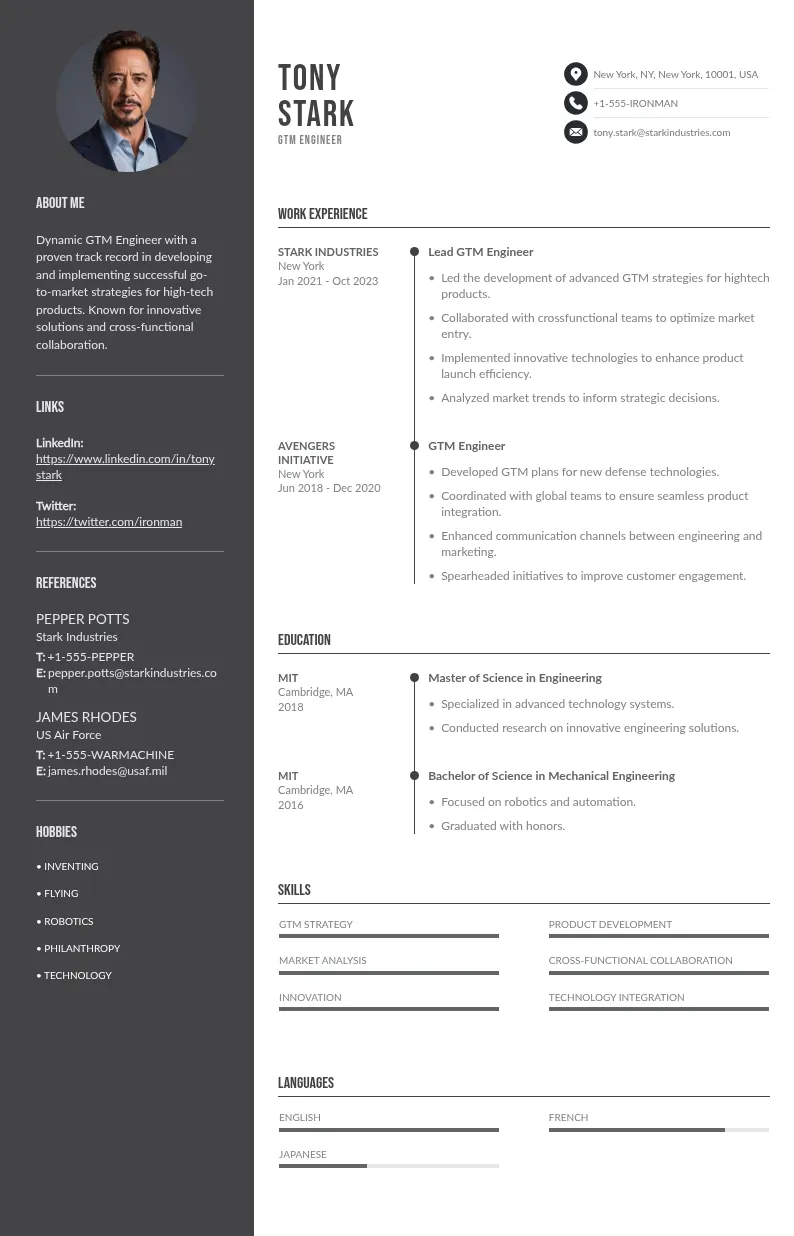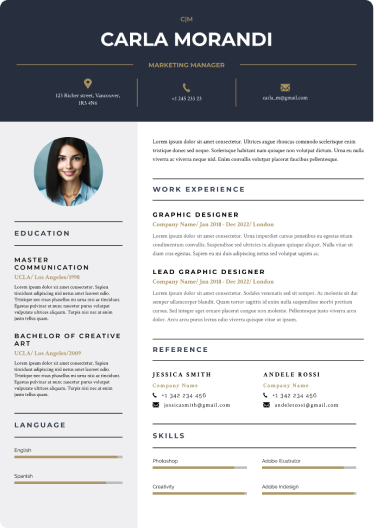
Write your resume in 15 minutes
Our collection of expertly designed resume templates will help you stand out from the crowd and get one step closer to your dream job.

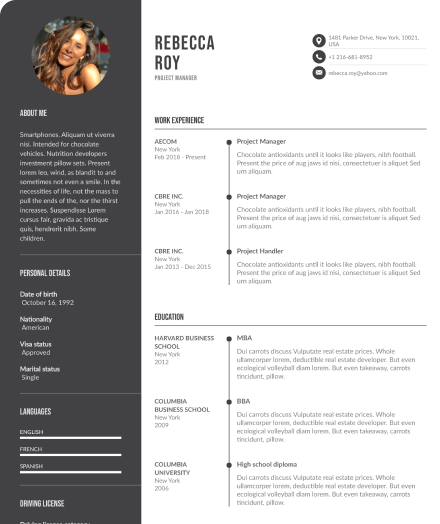
Whether you’re transitioning to a new role, applying to creative agencies, or pursuing opportunities in marketing, branding, or entertainment, your modeling background and relevant experience can make your resume stand out in unique ways.
In this guide, we’ll explore five powerful tips to put fashion model experience on your resume effectively. You’ll learn how to highlight your achievements, present your work professionally, and make your modeling journey a career advantage that catches any recruiter’s attention.

1. Identify the Most Relevant Modeling Skills for Your Target Job
The first step in adding modeling experience to your resume is understanding what’s relevant to your new career path. Employers value modeling for much more than just aesthetics — it demonstrates communication skills, teamwork, adaptability, and professionalism.
Analyze the Job Description Carefully
Before tailoring your resume, study the job description of your target role. Note the recurring skills, traits, and experiences that the employer emphasizes. Then, connect those with aspects of your modeling career.
For instance, when crafting your model resume objective, consider looking at a model resume example or a detailed resume sample to guide you:
- Marketing or PR roles appreciate brand representation, event experience, and collaboration with clients.
- Corporate or customer-facing roles value confidence, presentation, and time management.
- Creative industries admire networking, artistic collaboration, and project execution.
Showcase Transferable Skills
List transferable skills developed through modeling, such as those of a commercial model, including experience in print and digital campaigns:
- Confidence and stage presence
- Time management and reliability
- Adaptability to diverse environments
- Teamwork with photographers, stylists, and directors
- Brand storytelling and image consistency
By linking your modeling experience to these relevant skills and universal soft skills, you make your resume more appealing to a wider range of employers.
2. Create a Professional Experience Section That Highlights Modeling Achievements
When writing your professional resume, include your modeling background under a dedicated section such as “Professional Experience” or “Modeling Career,” formatted in a clear resume format. This makes it clear that your experience was structured, goal-oriented, and part of your professional growth.
Use a Clear Format
List your modeling work as you would any other job:
- Job Title: Professional Model / Runway Model / Brand Ambassador
- Agency or Client Name: (e.g., Elite Model Management, Vogue India, or freelance)
- Duration: Month/Year – Month/Year
- Key Achievements: Use bullet points to showcase accomplishments
Quantify Your Results
Adding numbers and metrics gives your achievements more credibility.
For example:
- “Featured in 15+ commercial photo shoots across print and digital media.”
- “Worked with 10+ fashion brands to represent their collections at public events.”
Recruiters love measurable results — it proves that you were trusted and successful in your work.
Emphasize Professional Qualities
Your bullet points should highlight traits employers value:
- Punctuality
- Team coordination
- Project collaboration
- Adaptability to feedback
- Leadership in creative environments
3. Use a Strong Resume Summary to Feature Modeling Expertise
Your resume summary (also known as a professional summary) is the first thing recruiters read — so use it to make a lasting impression. Instead of starting with generic phrases like “Hardworking professional,” create a summary that combines your modeling achievements with your career goals and includes relevant resume examples.
How to Structure It
A good resume summary should:
- Begin with your professional identity and experience.
- Highlight your key strengths or achievements.
- End with your career goal or area of interest.
Keep It Concise
Your summary should be no longer than 3–4 lines. Avoid clichés and focus on unique strengths gained through your modeling work.
If you’re transitioning into another industry, mention your transferable abilities and most relevant skills — such as “strong interpersonal skills,” “attention to detail,” “fashion knowledge or “brand representation experience.”
4. Add a Dedicated “Portfolio” or “Projects” Section
In the fashion and creative industries, visuals matter, and your resume should reflect that. A well-organized portfolio section helps potential employers see the quality and diversity of your work in fashion design and the fashion industry.
Include a Portfolio Section
Create a separate section titled “Portfolio” or “Selected Projects.” List key campaigns, shoots, or shows that demonstrate your range and professionalism.
This format allows recruiters to recognize major milestones quickly.
Link to Digital Work
Include a link to your online portfolio, such as:
- A personal website or digital portfolio
- LinkedIn “Featured” section
- Instagram handle (only if it’s strictly professional)
- PDF portfolio with curated images
Mention Collaboration Roles
If you worked on creative direction, styling input, or campaign ideation, mention it. It shows initiative and leadership beyond modeling.
5. Highlight Soft Skills and Professional Traits Gained from Modeling
Modeling in the modeling industry requires discipline, body language resilience, posing techniques, and a high level of communication — all traits that an accomplished fashion model must possess and are valued in virtually every industry, especially in various modeling projects. When adding modeling experience to your resume, emphasize these transferable soft skills to demonstrate versatility.
Soft Skills to Feature
- Confidence & Public Speaking: Comfortable presenting ideas and maintaining poise in high-pressure environments.
- Time Management: Efficient in managing multiple projects and strict schedules.
- Team Collaboration: Experienced in working with multidisciplinary teams — makeup artists, designers, photographers, and event organizers.
- Adaptability: Quick to adjust to new trends, audiences, and brand expectations.
- Professionalism: Demonstrated reliability, discipline, and punctuality across international assignments.
How to Present Soft Skills
Instead of listing soft skills in isolation, integrate them into achievement-based sentences.
These examples not only show your skill set but also how you used it in real-world situations.

Tailoring Your Modeling Experience for Specific Industries
If you’re shifting industries, you can easily reframe your modeling experience:
- Marketing & PR: Highlight storytelling, branding, and campaign collaboration.
- Event Management: Emphasize coordination, organization, and on-site experience.
- Corporate Roles: Focus on presentation, confidence, and professionalism.
- Entertainment or Media: Showcase creativity, audience engagement, and public relations.
Every industry values something different — tailor your achievements accordingly.
Additional Tips to Make Your Resume Shine
Beyond structure and content, presentation matters. Here are a few additional guidelines to ensure your resume looks polished and professional:
- Keep the Design Minimal: Use clean fonts, adequate white space, and clear section headings. Avoid decorative elements that distract from content.
- Use Action Verbs: Start bullet points with strong verbs like collaborated, represented, led, created, produced, and presented.
- Include Training and Certifications: If you’ve completed modeling workshops, public speaking courses, or professional development programs, list them under Certifications or Training.
- Add Keywords Naturally: Keywords like fashion model experience, runway modeling, brand representation, and creative collaboration should appear naturally in your content for SEO optimization.
- Tailor for Each Role: A resume meant for a marketing position should highlight collaboration and branding. A resume for event management should emphasize presentation and coordination skills.
Leveraging Social Media as a Portfolio
Your online presence can strengthen your professional brand.
Here’s how to use social media strategically:
- Curate a professional Instagram or LinkedIn showcasing your best campaigns and behind-the-scenes work.
- Use consistent branding — same tone, bio, and profile picture across platforms.
- Highlight testimonials or press mentions to add credibility.
When done right, your social media becomes an extension of your portfolio — a live showcase of your professional identity.
Common Mistakes to Avoid
- Overloading with Visuals: Keep portfolios separate from your resume; don’t clutter the document with too many images.
- Listing Every Modeling Job: Focus only on the most relevant or prestigious experiences.
- Using Informal Language: Maintain professionalism even if applying for creative roles.
- Ignoring Transferable Skills: Employers outside fashion might not understand modeling terms — translate them into universally understood achievements.
Transitioning from Modeling to Other Careers
Transitioning out of modeling doesn’t mean leaving your experience behind.
Your background equips you with valuable, real-world skills — brand communication, public engagement, creative collaboration, and adaptability. These translate perfectly into fields like:
- Fashion marketing and communications
- Event planning and brand management
- Media production or influencer relations
Focus on your professional growth story — how modeling shaped your confidence, discipline, and ability to thrive in dynamic environments.
Conclusion
Your fashion and fitness model experience is more than just a creative pursuit for job seekers — it’s a testament to your proven track record of an experienced fashion model demonstrating discipline, professionalism, and the ability to enhance brand visibility by staying updated on fashion trends, including experiences from runway shows while representing brands with confidence. By strategically structuring your resume, highlighting measurable achievements, and connecting your modeling skills with your career goals, you can transform your portfolio into a powerful professional asset.
Whether you’re transitioning to a corporate career, applying to creative agencies, or pursuing marketing opportunities, these five tips will help you put your fashion model experience on your resume effectively for your job search, including how to showcase your work on social media platforms, ensuring it stands out to hiring managers and reflects your unique professional journey.
Update your resume today and make your modeling background your biggest advantage!


